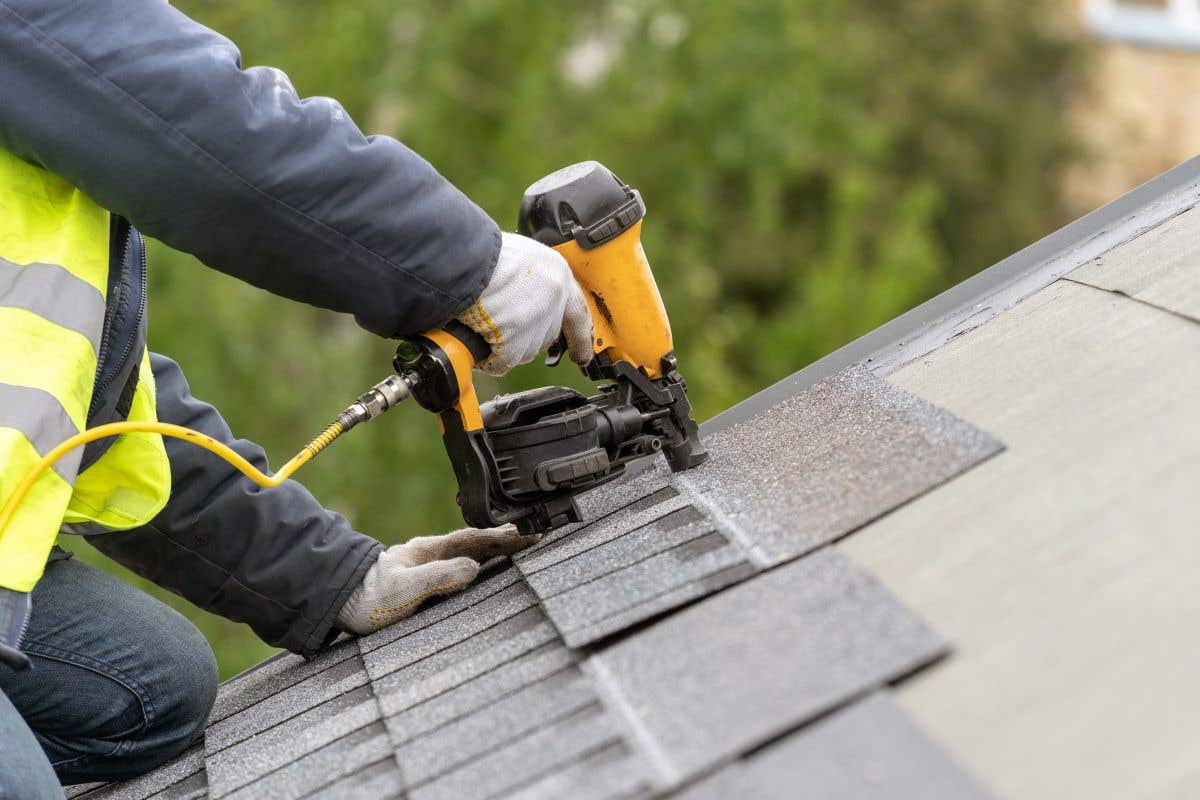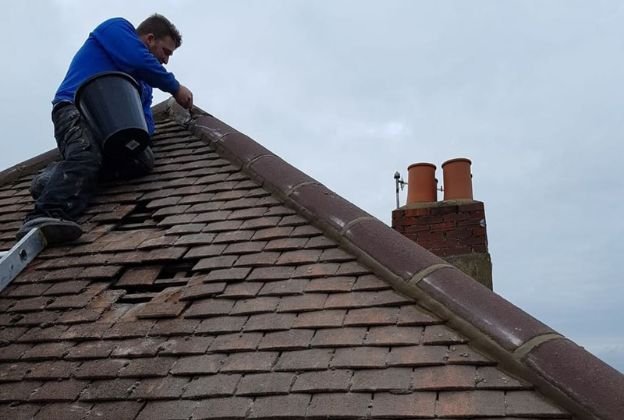Roof Repair Oahu: Expert Roof Services for Lasting Protection
Wiki Article
Comprehending the Different Kinds Of Roofings: A Comprehensive Overview for Homeowners
In the world of homeownership, selecting the proper roof covering style is a decision that lugs significant effects for both capability and aesthetic charm. With a selection of alternatives-- ranging from the traditional gable to the modern flat-- each type presents distinct advantages and difficulties that ought to straighten with the home owner's certain demands and environmental factors to consider. Comprehending these distinctions not only aids in making an educated choice but likewise affects long-term upkeep and power performance. As we explore the ins and outs of numerous roofing types, it comes to be apparent that dimension does not fit all; the best selection might amaze you.Gable Roofs
Saddleback roofs, characterized by their triangular form, are amongst the most preferred roofing styles due to their simpleness and performance in losing water and snow. This style features 2 sloping sides that meet at a ridge, enabling efficient water drainage and decreasing the danger of water buildup. The high pitch frequently linked with saddleback roofs boosts their capacity to handle heavy precipitation, making them ideal for different environments.Along with their sensible benefits, gable roofing systems provide visual versatility. They can be adapted to numerous building designs, from typical to modern-day homes. The style can likewise accommodate extra functions such as dormer windows, which enhance natural light and air flow in the attic room space.
Moreover, gable roof coverings give ample space for insulation, adding to energy effectiveness. Property owners can choose from a selection of roofing materials, including asphalt roof shingles, steel, and tiles, further improving modification alternatives.
Despite their benefits, gable roof coverings may need additional support in locations susceptible to high winds or heavy snowfall. Overall, the gable roofing stays a popular selection because of its blend of functionality, longevity, and aesthetic allure.
Flat Roofs
Flat roofs are commonly recognized for their minimalist layout and useful applications, especially in commercial and commercial settings (oahu roofing). These roofing systems feature a straight or nearly horizontal surface area, which permits very easy construction and flexible space application. While they might lack the aesthetic charm of pitched roof coverings, flat roofs offer various advantages, especially in metropolitan atmospheres where taking full advantage of space is essentialOne of the key benefits of flat roofing systems is their accessibility. Homeowners can use the roofing space for different objectives, such as roof gardens, terraces, or solar panel installations. Furthermore, flat roofs are generally more cost-efficient to set up and maintain contrasted to their sloped counterparts, as they need less products and labor.
Usual products used for level roofs include built-up roof covering (BUR), changed bitumen, and single-ply membrane layers, each offering distinct advantages. Overall, flat roofings offer as a useful and versatile choice for numerous property owners and organizations alike.
Hip Roofing Systems
Hip roofs are defined by their sloped sides that merge at the top, creating a ridge. This style stands out from saddleback roofs, as all four sides of a hip roofing system incline downwards towards the walls, giving a much more stable framework. The angle of the inclines can vary, permitting for flexibility in architectural appearances and performance.One of the key benefits of hip roof coverings is their capability to hold up against hefty winds and negative climate condition. The sloped surfaces allow better water drainage, minimizing the threat of leakages and water damage. Additionally, hip roof coverings offer enhanced attic room area, which can be used for storage or also transformed right into livable areas.
However, building a hip roofing system can be much more costly and complex than easier roofing system kinds, such as gable roofings. The added product and labor entailed in producing the slopes and making certain appropriate architectural integrity can bring about higher expenses. Regardless of these downsides, lots of property owners prefer hip roofing systems for their sturdiness, aesthetic allure, and potential for energy efficiency.
Mansard Roofing Systems
Mansard roofs, commonly acknowledged by their distinct four-sided design, attribute two inclines on each side, with the lower redirected here incline being steeper than the upper. This architectural style, originating from France in the 17th century, is not only cosmetically appealing yet functional, as it makes the most of the useful area in the upper floorings of a building. The steep reduced incline enables even more clearance, making it an excellent choice for lofts or attic rooms, which can be converted into living areas.Mansard roofings are defined by their adaptability, accommodating various architectural styles, from traditional to modern. They can be built with different materials, consisting of asphalt tiles, slate, or steel, providing house owners with an array of options to fit their budget plans and choices. In addition, the design permits the assimilation of dormer home windows, improving natural light and ventilation in the top degrees.
However, it is necessary to consider the possible downsides. Mansard roofings may need more maintenance due to the intricacy of their layout, and their steep slopes can be challenging for snow and rainfall drainage. Generally, mansard roofing systems combine elegance with functionality, making them a preferred choice amongst homeowners seeking distinctive architectural attributes.
Lost Roofings
As property owners increasingly look for simpleness and functionality in their architectural layouts, dropped roofing systems have actually become a popular selection. Identified by a single sloping plane, a shed roof provides a minimal aesthetic that complements various home designs, from contemporary to rustic.Among the main advantages of a shed roof covering is its straightforward building, which often equates to decrease labor and material prices. This style enables effective water drainage, reducing the risk of leaks and water damages. Additionally, the vertical slope gives enough area for skylights, boosting all-natural light within the inside.
Shed roofs additionally use convenience in terms of use. They can be efficiently integrated right into additions, garages, or outside frameworks like structures and sheds. Moreover, this roofing style can accommodate different roof covering materials, including steel, asphalt tiles, or also environment-friendly roofings, lining up with environmentally friendly campaigns.
Nevertheless, it is vital to think about local climate problems, as hefty snow tons might necessitate changes to the roofing system's angle or framework. On the whole, lost roofing systems provide a practical and cosmetically pleasing alternative for homeowners looking to make the you can find out more most of performance without compromising style.
Conclusion


Gable roofs, characterized by their triangular form, are among the most popular roofing styles due to their simplicity and efficiency in shedding water and snow. oahu roofing. The steep pitch frequently associated with gable roofs boosts their capacity to manage heavy rainfall, making them appropriate for different environments
While they might lack the visual appeal of pitched roofs, level roof coverings supply countless benefits, particularly in city settings where maximizing space is critical.

Report this wiki page